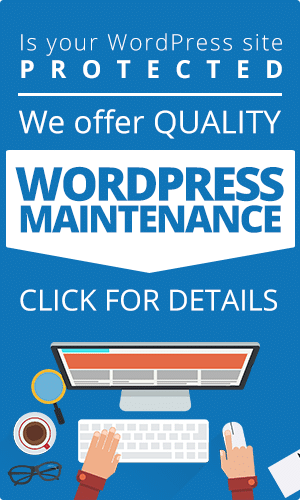How To Enable SSL For WordPress
According to recent statistics, nearly 33% of the top 10 million websites are powered by WordPress, making it one of the most popular content management systems available. To ensure that data is secure and transmitted safely over the web, it is important to enable SSL (Secure Sockets Layer) for WordPress.
Enabling SSL for WordPress is important for several reasons. First, it helps protect sensitive information such as login credentials, personal data, and payment details from being intercepted by hackers. Second, SSL is now considered a ranking factor by search engines, so having SSL enabled can improve your website’s visibility in search results. Finally, SSL provides a sense of trust and credibility to your website visitors, as they can see the padlock icon in their browser’s address bar, indicating that the connection is secure.
Before enabling SSL for WordPress, you need to choose an SSL certificate. There are several types of SSL certificates available, including domain validated (DV), organization validated (OV), and extended validation (EV) certificates. The type of certificate you choose depends on your needs and the level of trust you want to establish with your website visitors.
Once you have chosen an SSL certificate, the next step is to install it on your WordPress website. The installation process may vary depending on your hosting provider, but generally, it involves generating a certificate signing request (CSR), submitting it to a certificate authority (CA), and then installing the issued certificate on your server.
After installing the SSL certificate, you need to verify its setup to ensure that it is working correctly. You can use online SSL checker tools to verify the certificate installation and check for any errors or warnings. If there are any issues, you may need to troubleshoot them by checking your server configuration, updating your WordPress settings, or contacting your hosting provider for assistance.
Enabling SSL for WordPress is an essential step in securing your website and protecting your users’ data. By following the steps outlined above, you can ensure that your WordPress website is encrypted and that your visitors can browse your site with confidence.
Key Takeaways
- SSL is important for WordPress as it secures data transmission, protects user privacy, boosts website credibility, and prevents data breaches.
- SSL encryption process involves encrypting data using public and private keys, verifying server identity through digital certificates, establishing a secure connection using HTTPS protocol, and ensuring data integrity and authenticity.
- SSL installation methods for WordPress include manual installation through hosting provider, using SSL plugins like Let’s Encrypt or Really Simple SSL, configuring SSL through control panels like cPanel or Plesk, generating and installing SSL certificates with OpenSSL, or hiring a professional.
- SSL benefits for WordPress users include safeguarding login credentials and personal information, protecting financial transactions and payment details, guarding against phishing attacks and data interception, enhancing trust and confidence in the website, and allowing secure access to restricted areas or membership sites.
The Benefits of Enabling SSL for WordPress
Enabling SSL for WordPress websites offers numerous advantages, including increased security and improved traffic due to the fact that Google has been known to give a rankings boost to sites that are secured with HTTPS, with organic search engine visits increasing by up to 6.66% after making the switch.
By installing an SSL Certificate on your WordPress website, you will be able to encrypt data sent between the web server and browsers of visitors. This helps protect sensitive information from being intercepted by malicious actors such as hackers or cybercriminals.
Additionally, using an SSL Certificate will help ensure that all communications between users and your site remain secure and private.
Switching from HTTP to HTTPS also provides greater trustworthiness in the eyes of customers who may be apprehensive about providing sensitive information such as credit card numbers without any encryption at all.
Free SSL Certificates can also be obtained from certain providers which allows small businesses on a budget to reap the same benefits as larger enterprises when it comes to protecting their customer data and their overall online presence.
Utilizing an SSL Certificate for WordPress websites is highly recommended since it offers multiple benefits in terms of safety and enhanced visibility on search engines which can lead to more traffic and conversions over time.
Choosing an SSL Certificate
When selecting an SSL Certificate, it is important to consider the level of security and encryption provided. WordPress SSL certificates come in various levels such as single domain, multi-domain, wildcard, and extended validation.
A single domain certificate is sufficient for most WordPress sites as it provides a basic level of encryption and authentication.
Multi-domain certificates are useful for larger websites that need to secure multiple domains.
Wildcard SSL Certificates provide unlimited subdomains under one main domain name.
Extended validation certificates offer higher levels of encryption and authentication.
Most hosting companies provide free basic SSL Certificates which can be used with WordPress sites. However, they may not always be the best option since they do not offer the same level of encryption as premium certificates do.
To use HTTPS on your WordPress site, you will need to install an SSL Certificate by following the instructions provided by your host or a trusted third-party provider. This process often involves generating a Certificate Signing Request (CSR) and installing the certificate once it has been issued by the provider.
It’s also important to remember that if you want all visitors to access your website using HTTPS, then you should opt for a wildcard certificate. This will secure all subdomains under one main domain name and offer increased protection against data breaches.
When purchasing an SSL Certificate, make sure that it comes with technical support. This way, any issues can be quickly resolved if needed.
Taking these steps will ensure that your WordPress site is properly secured with enough encryption strength to protect sensitive user information from malicious activities online.
Installing the SSL Certificate on WordPress
Installing an SSL Certificate requires technical knowledge to ensure that the process is completed correctly and securely. To install it on WordPress, follow these steps:
- Obtain the certificate from a third-party provider.
- Log into the WordPress dashboard and access the ‘Settings’ tab.
- Under the ‘Settings’ tab, select ‘General’.
- Enter in the URL of your website beginning with ‘https://.’
- Save any changes made before leaving this page.
It is important to note that if you are having difficulty installing an SSL Certificate via WordPress or have any questions about enabling SSL for your website, contact a knowledgeable IT professional or web developer for assistance.
Verifying Your SSL Certificate Setup
Once the SSL Certificate is installed, it is important to verify its setup. To do this, WordPress offers a dedicated plugin that can be used. The plugin will check if the SSL Certificate is properly set up and configured for use with WordPress. It also verifies whether or not HTTPS is enabled on the site, as well as other details related to the SSL Certificate.
Users can manually verify their setup by checking their browser’s address bar for an ‘https’ prefix before the website’s URL. If HTTPS is detected in the address bar, then it indicates that the SSL Certificate has been successfully configured and enabled on WordPress.
Users should also ensure that all elements of their website are loading securely by checking their browser console for any errors or warnings related to insecure content being loaded on secure pages.
By verifying these components, users can be sure that they have correctly enabled SSL on WordPress and are taking full advantage of its security benefits.
Troubleshooting SSL Errors
Despite the fact that SSL Certificates are generally simple to install on WordPress, troubleshooting errors can be complex. According to a recent survey, nearly 50% of users experienced an issue with their SSL after installation.
One common problem is when a website URL does not change from http:// to https:// after installing the certificate. This means that visitors still see the insecure version of your WordPress site and any pages or content within it will not be encrypted by SSL technology.
Additionally, if there are elements within your WordPress Site that have been hard-coded as http:// URLs, you may encounter mixed content warnings which require manual intervention in order for them to appear securely over https://.
It is important to take time and properly configure your WordPress Site’s settings accordingly once an SSL Certificate has been installed. This includes setting up redirects from the old http:// URL structure to the new https:// version and resolving all mixed content issues reported within web browsers.
As most modern browsers will actively block insecure content being loaded into secure pages, it is essential that all elements of a page are served securely over HTTPS in order for them all load properly.
Those using caching plugins should also clear their cache after setting up their SSL Certificate so visitors always access the secure version of your site correctly each time they visit it in the future. Taking this extra step ensures that no data is sent unencrypted between visitors’ computers and your website’s server for maximum security and privacy online.
Frequently Asked Questions
How does SSL improve WordPress security?
SSL improves WordPress security by encrypting data sent between the website and visitors, thus protecting sensitive information from malicious users. It also provides authentication to ensure that visitors are connecting to the correct server and not a fake one.
Are there any free SSL certificates available?
Yes, there are free SSL certificates available. Examples include Let’s Encrypt and Cloudflare Free SSL which both offer domain-validated encryption without a cost. These can be used to secure WordPress sites and provide an extra layer of security.
Is there a difference between an SSL and TLS certificate?
A TLS certificate is a type of encryption protocol, which creates secure communication between two hosts. As opposed to an SSL certificate, it has been updated and provides additional security layers, such as authenticated encryption and extended validation. By utilizing the power of imagery, one can think of TLS certificates as a vault that protects valuable data from prying eyes.
How can I tell if SSL is enabled on my WordPress website?
To determine if SSL is enabled on a WordPress website, check the URL for the page. If it begins with “https://” then SSL is enabled. Otherwise, if it begins with “http://,” then SSL is not enabled.
Can I install an SSL certificate without a hosting provider?
A SSL certificate is like a lock, securing the data of your website. It cannot be installed without a hosting provider as they are responsible for buying and managing the certificate. Without them, website security would not exist in its current form.
Conclusion
The use of SSL encryption is an important step towards maintaining the privacy and integrity of a WordPress website. By taking the necessary steps to enable SSL, site owners can ensure that their visitors’ data is secure and that they are fully compliant with industry standards.
With the right combination of technology, knowledge, and dedication, any website owner can enjoy the security benefits that come with enabling SSL encryption for WordPress.
The peace of mind gained by having this added layer of protection is invaluable in today’s digital world.






